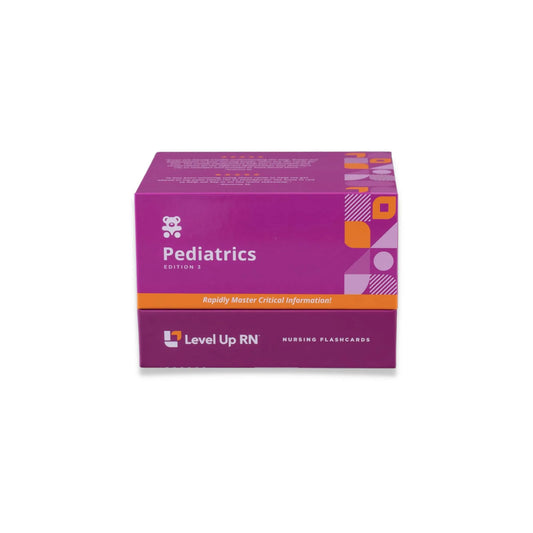Hi, I'm Cathy with Level Up RN. In this video, I'll be discussing growth hormone deficiency and growth hormone excess. And at the end of the video, I'm going to give you guys a little quiz to test your understanding of these important disorders. And if you have our Level Up RN pediatric nursing flashcards, go ahead and pull out your flashcards so you can follow along with me.
With growth hormone deficiency, we have decreased release of growth hormone from the anterior pituitary gland. This can be caused by a congenital defect, a tumor in the pituitary gland, or some kind of trauma that interferes with the production or release of growth hormone. Signs and symptoms of growth hormone deficiency includes delayed growth, slow tooth eruption, truncal obesity, and a high-pitched voice. And then during infancy, it can also cause hypoglycemia and a micropenis in males. In terms of diagnosis, it's important to rule out other causes of delayed growth, such as malnutrition or celiac disease. Blood tests that may be ordered include insulin-like growth factor. An X-ray may also be ordered to check for the child's bone growth, and then a GH stimulation test may be performed. This is where a medication is administered to the child, which should prompt the pituitary gland to produce growth hormone. If levels of growth hormone do not rise, then that would be indicative of growth hormone deficiency. Treatment of growth hormone deficiency includes growth hormone replacement therapy with a synthetic growth hormone such as somatropin. This would be administered through the subcutaneous route, typically on a daily basis for several years. Monitoring the child's growth throughout therapy is going to be super important, and we would discontinue therapy when epiphyseal fusion has occurred.
Now moving on to growth hormone excess. This is where we have the excess release of growth hormone from the anterior pituitary gland. When this occurs during childhood or adolescence, so prior to epiphyseal plate closure, then this results in gigantism. This is different than acromegaly, which is where we have excess growth hormone in adulthood, so after epiphyseal plate closure. Growth hormone excess is most commonly caused by a tumor or lesion in the pituitary gland, but it can also be caused by an issue with the hypothalamus as well. When we have an excessive amount of growth hormone in the body, this causes accelerated growth of the bone, muscle, and connective tissue. Signs and symptoms of growth hormone excess include excessive height, delayed puberty, vision issues, a prominent forehead and jaw, headaches, increased sweating, and large hands and feet. In terms of diagnosis, labs will show an increase in insulin-like growth factor, and then a growth hormone suppression test may be performed. This is where a glucose solution is provided to the child, which should cause growth hormone levels to decrease. If they don't, then that is indicative of growth hormone excess. And then a CT or MRI of the head may be ordered in order to assess for a pituitary tumor. Treatment of growth hormone excess typically includes surgical removal of the pituitary tumor and/or radiation to decrease the size of the tumor. If surgery is not an option or is not effective, then there are medications that can be used to help decrease levels of growth hormone in the body.
All right. It's quiz time, and I've got three questions for you.
Question number one. Is a prominent forehead and jaw and increased sweating indicative of growth hormone deficiency or growth hormone excess? The answer is growth hormone excess.
Question number two. Is slow tooth eruption and truncal obesity indicative of growth hormone deficiency or growth hormone excess? The answer is growth hormone deficiency.
Question number three. When treating growth hormone deficiency in a child, when should growth hormone replacement therapy be discontinued? The answer is when epiphyseal closure has occurred.
All right. That is it for this video. I hope it was helpful. Take care, and thank you so much for watching.


